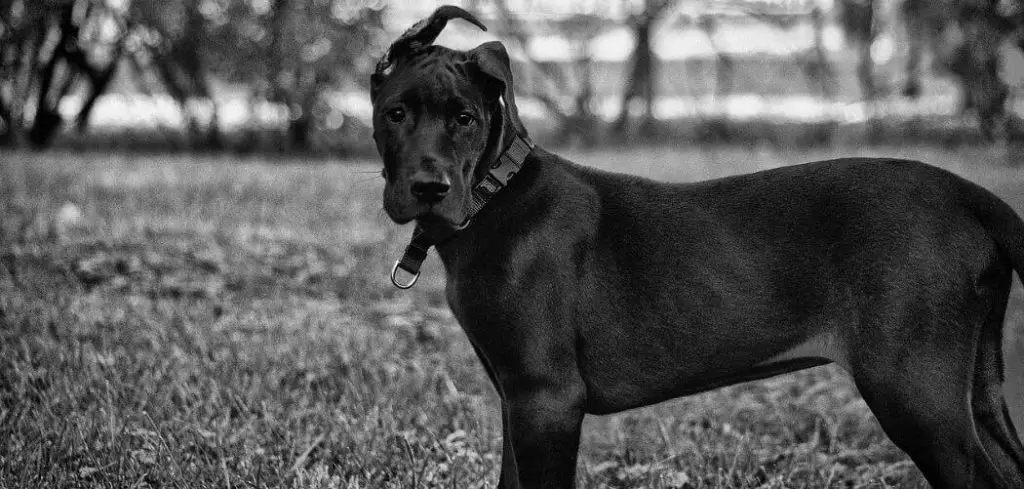When a dog is panting and refuses to settle, it can be alarming. Panting is a normal mechanism for regulating body temperature, but when paired with restlessness or inability to relax, it may indicate stress or underlying health problems.
We outline the common reasons for panting and not settling in dogs, what you can do at home, and when to seek veterinary help.
Dog Panting and Not Settling — Why It Happens
A dog that is panting and unable to settle is usually restless due to discomfort, anxiety, or pain. This behavior can happen during heat, after exercise, with digestive upset, or when a dog is stressed. It may also point to medical issues like arthritis, heart problems, or respiratory distress if it continues for long periods.

Dog Panting and Not Settling: Common Causes
Anxiety and Stress
Anxiety is a major contributor to panting and restlessness in dogs. Dogs may become unable to settle when stressed by changes in their environment, new people or pets, or loud noises. Panting, pacing, whining, and seeking attention are common behaviors.
Chronic anxiety can affect a dog’s overall health and behavior. Creating predictable routines, providing a calm environment, and using positive reinforcement for calm behavior can help dogs relax.
In more severe cases, a veterinarian or certified behaviorist may recommend anti-anxiety interventions or behavioral therapy.
Related: Dog Panting Excessively and Restless (Here’s why)
Pain or Discomfort
Pain is another common cause of panting and inability to settle. Dogs often exhibit restlessness when experiencing joint pain, gastrointestinal discomfort, injuries, or dental issues. Panting can accompany this as a stress response.
Other signs may include limping, vocalizing, flinching when touched, or changes in appetite. Identifying the source of pain is crucial, as untreated discomfort can lead to worsening health and behavior problems.
Heat and Overheating
Excessive heat can cause panting and restlessness, making it difficult for a dog to settle. Dogs may pant more and move around in search of cooler areas or relief.
Signs of overheating include drooling, lethargy, red gums, or seeking shade and water. Heatstroke is a medical emergency, so immediate cooling and veterinary care are essential if overheating is suspected.
Hunger or Digestive Issues
Hunger, digestive upset, or gastrointestinal discomfort can make a dog pant and restless. Dogs may pace, circle, or whine while searching for food or water.
Other digestive symptoms such as vomiting, diarrhea, or bloating may also be present. Maintaining regular feeding schedules and monitoring diet quality can reduce this type of restlessness.
Painful or Urgent Medical Conditions
Serious medical conditions, including heart disease, respiratory issues, or kidney problems, can trigger panting and inability to settle.
When a dog feels unwell, restlessness and seeking attention are natural coping behaviors.
Additional symptoms to watch for include rapid heart rate, labored breathing, coughing, or vomiting. Prompt veterinary evaluation is necessary to diagnose and manage these conditions.
Attention-Seeking Behavior
Some dogs learn that panting and acting restless results in increased attention from their owners. Over time, this learned behavior can reinforce clinginess and hyperactivity, making the dog appear unable to settle.
Structured attention, consistent boundaries, and rewarding calm behavior help prevent attention-seeking from becoming a long-term pattern.
Environmental Factors
External factors, such as loud noises, new household members, or changes in routine, can also lead to panting and restlessness.
Dogs may move around constantly or pace as a way of coping with environmental stressors.
Providing safe spaces, maintaining familiar routines, and gradually introducing changes can help dogs adjust and reduce stress-related panting.
Read more: Dog Panting and Needy (Why your dog seeks constant attention)
What to Do If Your Dog Is Panting and Not Settling
Ensure your dog has a comfortable, cool space to rest. A calm environment helps reduce stress-induced panting.
Observe your dog for signs of pain, illness, or digestive upset. If any concerning symptoms arise, such as vomiting, limping, or labored breathing, seek veterinary care.
Provide mental and physical stimulation during the day to help your dog expend energy. Puzzle toys, training sessions, and interactive play encourage relaxation at rest periods.
Practice consistent routines for feeding, exercise, and rest. Predictable schedules help dogs feel secure and less anxious.
If behavioral causes are suspected, consult a certified dog behaviorist. They can provide personalized strategies to reduce anxiety, attention-seeking, and hyperactivity safely.
When to Call or Visit Your Vet
Contact a veterinarian immediately if your dog’s panting and inability to settle is accompanied by:
Persistent or worsening panting at rest
Vomiting, diarrhea, or sudden loss of appetite
Signs of pain, such as limping or sensitivity to touch
Labored breathing, coughing, or blue gums
Collapse or extreme lethargy
Early veterinary assessment can identify underlying medical issues, allowing timely treatment and reducing discomfort.
Read more: Dog Panting and Nervous (Understanding anxious behavior)
Key Takeaway
Panting paired with restlessness and inability to settle in dogs can stem from anxiety, pain, environmental stressors, or underlying medical conditions. While occasional restlessness may be normal, persistent or severe cases warrant attention.
Creating a calm environment, monitoring for health concerns, and seeking veterinary or behavioral guidance are essential for your dog’s comfort, health, and overall well-being.
